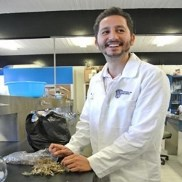Neuropharmacology of Plant Extracts and Their Active Compounds
A special issue of Pharmaceuticals (ISSN 1424-8247). This special issue belongs to the section "Natural Products".
Deadline for manuscript submissions: 30 April 2024 | Viewed by 6988
Special Issue Editor
Interests: pharmacology; medicinal plant; ethnobotany; pharmacy
Special Issues, Collections and Topics in MDPI journals
Special Issue Information
Dear Colleagues,
Approximately 13% of the world's population, around 970 million people, lives with mental disorders that affect emotional regulation, as well as physical and social functions. The number of cases of anxiety and depression due to the pandemic situation has increased dramatically. A small percentage of people with a mental disorder will look for medical advice. In rural areas, it is difficult to access pharmacological treatments. The use of medicinal plants among the general population for treating mental disorders has increased during the last three years. Many of these plant species and their active compounds remain to be studied. This Special Issue will be focused on medicinal plants used for mental disorders on the following topics: (i) ethnobotanical studies using quantitative tools, (ii) survey-based studies about self-medication/use of herbal products, (iii) preclinical and clinical studies about neuropharmacological action of plant extracts and/or their active compounds, (v) legislation and regulation of herbal products used for mental disorders, (vi) herb–drug combinations, and (vii) herb–drug-based treatments for preventing neurodegenerative diseases.
The journal Pharmaceuticals invites experts to contribute to this Special Issue with reviews and original research articles focusing on the pharmacology, toxicology, analytical chemistry, pharmacy, and ethnobotany of medicinal plants with neuropharmacological effects.
Dr. Angel Josabad Alonso-Castro
Guest Editor
Manuscript Submission Information
Manuscripts should be submitted online at www.mdpi.com by registering and logging in to this website. Once you are registered, click here to go to the submission form. Manuscripts can be submitted until the deadline. All submissions that pass pre-check are peer-reviewed. Accepted papers will be published continuously in the journal (as soon as accepted) and will be listed together on the special issue website. Research articles, review articles as well as short communications are invited. For planned papers, a title and short abstract (about 100 words) can be sent to the Editorial Office for announcement on this website.
Submitted manuscripts should not have been published previously, nor be under consideration for publication elsewhere (except conference proceedings papers). All manuscripts are thoroughly refereed through a single-blind peer-review process. A guide for authors and other relevant information for submission of manuscripts is available on the Instructions for Authors page. Pharmaceuticals is an international peer-reviewed open access monthly journal published by MDPI.
Please visit the Instructions for Authors page before submitting a manuscript. The Article Processing Charge (APC) for publication in this open access journal is 2900 CHF (Swiss Francs). Submitted papers should be well formatted and use good English. Authors may use MDPI's English editing service prior to publication or during author revisions.
Keywords
- medicinal plant
- mental disorder
- preclinical
- clinical






